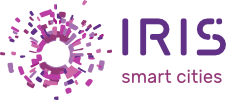THE LIGHTHOUSECITY OF UTRECHT
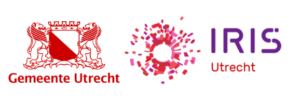
General Information
Home to 340.000 inhabitants, Utrecht is the fourth municipality in the Netherlands. It is the fastest growing city in the country, and expects to have 400.000 inhabitants in 2025.

Sustainability and RES
Utrecht is very consistent in its sustainable energy policy. As of 2009 Utrecht takes part in the Covenant of Mayors. The city’s 2008 Strategic Energy Action Plan (SEAP) was updated in the 2016 Strategic Energy Action Plan (SEAP), aiming at transforming the urban energy systems into sustainable, yet reliable and affordable systems. Core principle is that Utrecht wants to be a climate neutral and a climate robust city in 2030. Although Utrecht is very densely populated, the city has the highest rate of PV-systems installed in the Netherlands (10 MWp, 2015). The city wants the number of PV-systems to grow from 4.000 in 2015 to 10.000 in 2020. The number of EV-charging stations should grow to 1.000 and the number of EVs to 10.000, both in 2020. These numbers illustrate the city’s ardor to boost local production and use of renewables, and to adapt the urban energy system to accommodate high shares of both renewables and EVs. With this, Utrecht became 2015 Solar City of the Netherlands, leading the way with regard to installed solar panel power, smart grid technology and solar V2G charging infrastructure for e-cars. This is also illustrated by the 2015 nomination for the European e-CarTec Award of Utrecht’s smart charging infrastructure for e-cars connected with solar panels on neighboring public and private buildings.
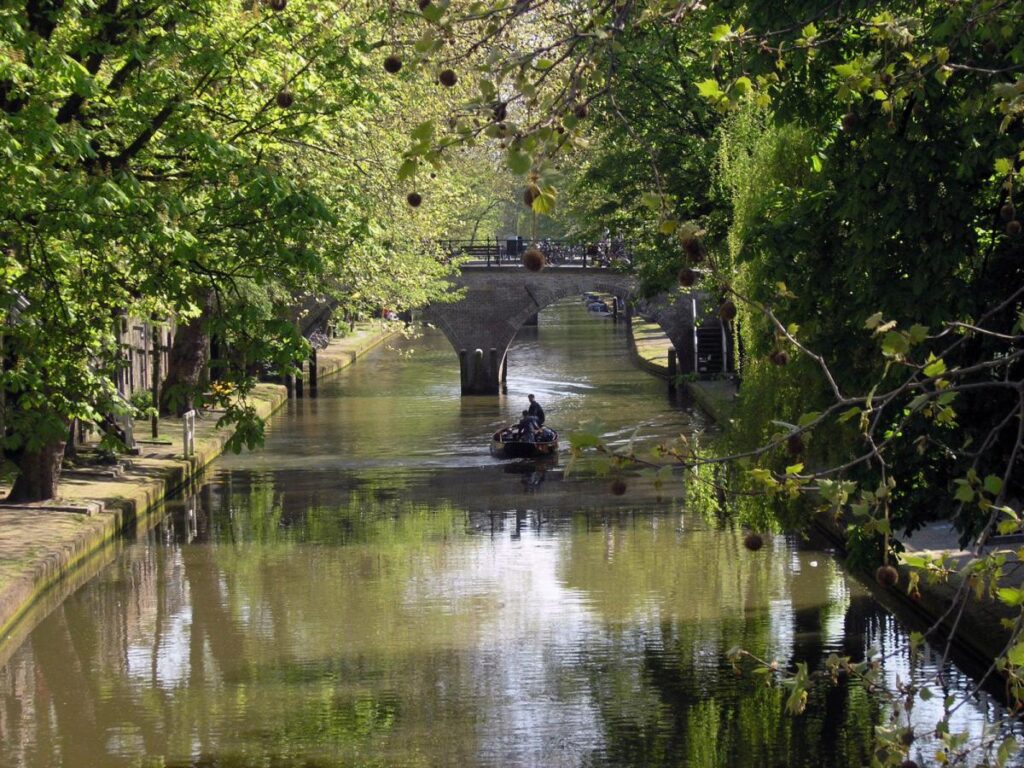
E-mobility
The city is the Dutch central mobility hub. The number of electric cars (4.035 EV in 2015) and charging stations installed (260 in 2015) is amongst the highest in the Netherlands. Three electric buses service Utrecht since 2014. Utrecht is a cyclists’ paradise with over 245 km of bicycle path; it invests heavily in even more cycling highways and bike garages.
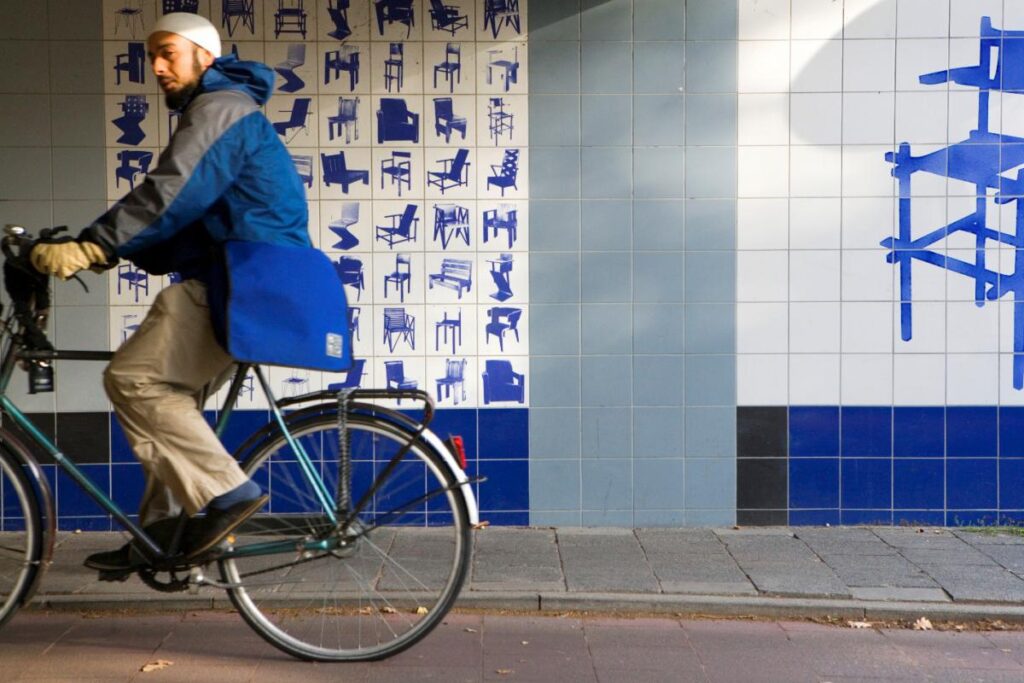
ICT and Data management
Utrecht strongly favors collecting and sharing urban data by means of an open ICT urban data platform (utrecht.dataplatform.nl), offering more than 200 data sets and data services for policy development and urban planning processes. These data are also freely accessible for citizens and other stakeholders, for information and for developing data services. The Utrecht FIWARE lab accelerates the development of these new data services.
Cooperation and Innovation
To foster international cooperation and innovation, Utrecht Municipality participates in many European networks, among which are EUROCITIES (active in all fora, chair of the Environment Forum in 2015 and 2016), Energy Cities, Climate-KIC (Europe’s largest public-private innovation partnership for climate change), the EIP Smart Cities and Communities (action cluster Integrated Infrastructures and Processes), the Open and Agile Smart Cities network (OASC), Energy Cities, ERRIN, POLIS, and the European EIT Climate-KIC climate innovation network.
The demonstration district
The Utrecht lighthouse district Kanaleneiland Zuid is situated in the Utrecht Centre-West area, just south-west of the beautiful historic city center and the Utrecht Central Station. With 4.800 inhabitants living in this residential area of 64 Ha, it is a densely populated district, home to in majority low-income households. The district hosts about 40 social housing apartment buildings, some semi-detached and row houses, three schools and some shops.
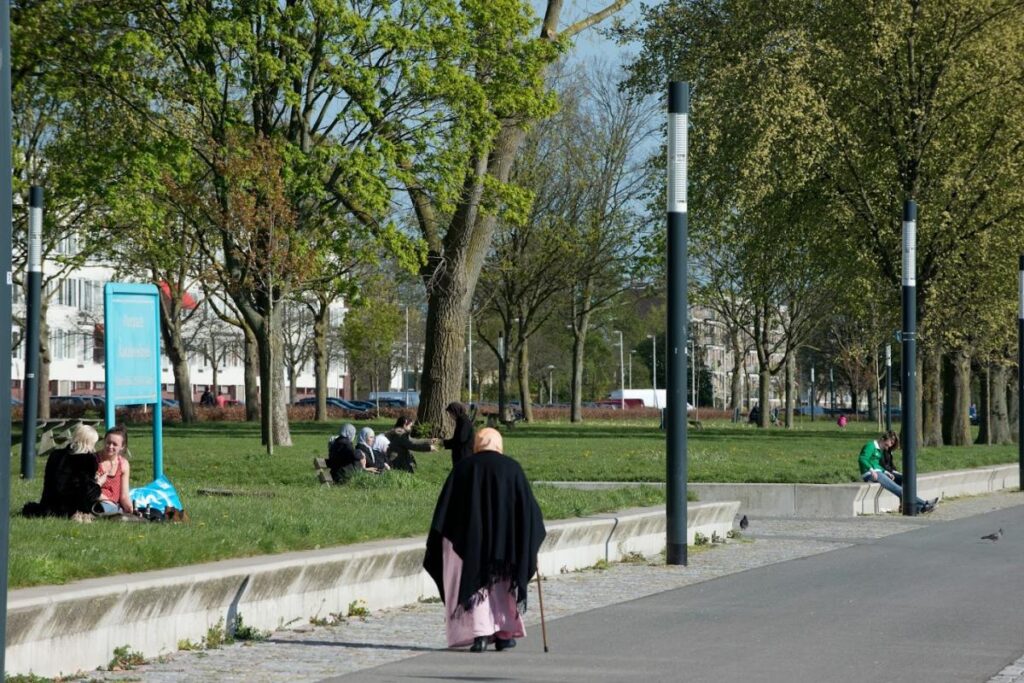
The district has a poor energy profile. The apartments are poorly insulated and have a typical energy label E-F. They show a typical yearly gas consumption of 1.000 to 1.500 m3, a typical electricity consumption of 1.600 to 2.300 kWh per year and a total energy bill of €1.200 to €1.800 per year. Next, the district is characterized by a mixed energy infrastructure. This is typical for Utrecht in the sense that it is provided with heat, domestic hot water and cooking gas by a mixture of district heating (30%, which is relatively much when compared to 4% average in the Netherlands) in combination with natural gas pipelines (70%). Contrary to the common situation in Europe, the district heating system is not in hands of a public company, but privately owned by lighthouse partner Eneco.
Deep retrofit towards label A has started – The social housing associations Bo-Ex, Portaal and Mitros who own the apartment blocks have recently started refurbishing buildings, resulting in energy labels A/B, including a total make-over of the building and increased comfort levels.
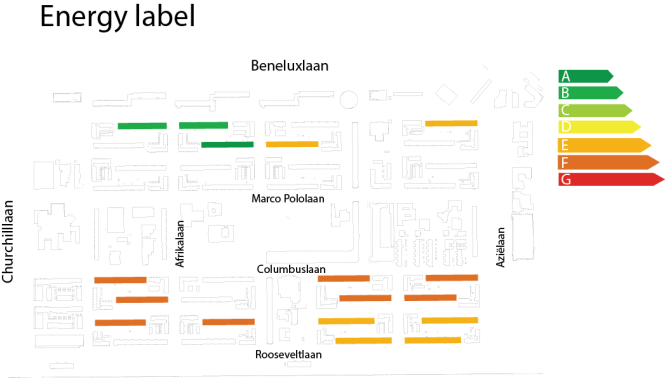
So far no renewables – The Utrecht 2016 SEAP stresses the ambition to generate renewable energy in the city itself. The city favors solar panels at all suitable roofs and clears the way for solar fields. Solar energy will be required for new housing and municipal land developments unless this is not possible or there are better alternatives available. However, in Kanaleneiland Zuid only a few PV-panels are installed so far. Bo-Ex buildings use PV for the common services like elevators and lighting in the porches. Also district heating, provided by the private company Eneco, could foster the use of renewables. From 2018 onwards, Eneco will provide district heating generated using biomass. In addition, there is a need to make the district heating network (DHN) more energy and cost effective, f.e. by using lower temperatures and sustainable biomass to fuel the district heating system.
Need for clean mobility – The Utrecht 2016 SEAP favors EVs, including public transport. This is in line with the current Sustainable Urban Mobility Plan and the ambitions relating to healthy air quality. The SEAP envisages a Zero Emission Mobility City center by 2030. Regarding electric buses in the city, the Municipality had decided, together with the provincial authorities who lead the concessions, for 100% electric buses in 2025.
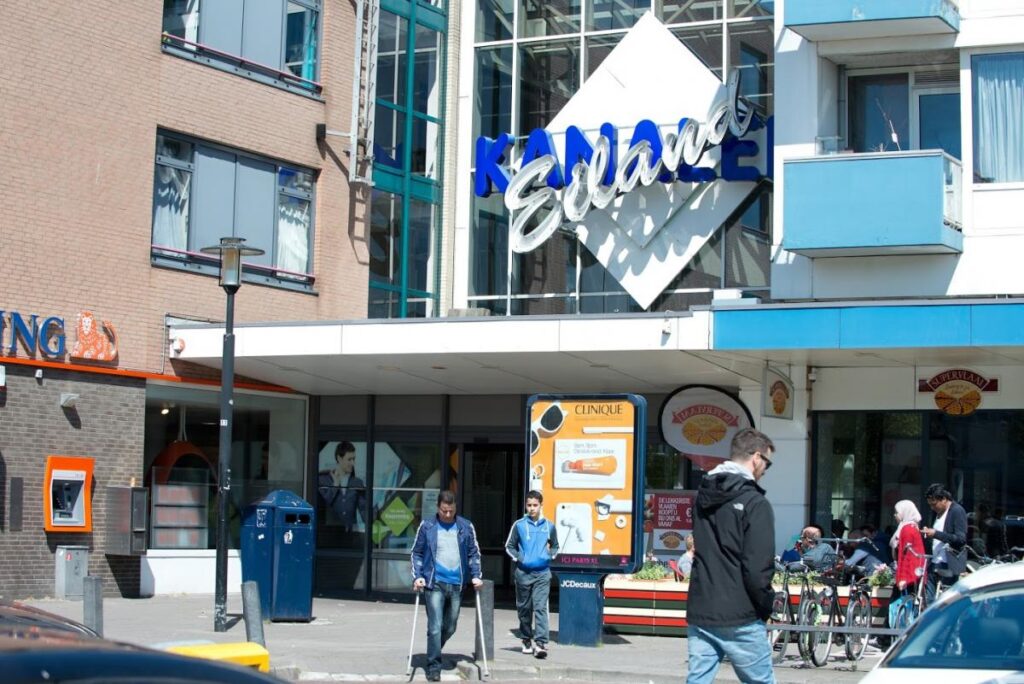
The Utrecht Lighthouse district challenges
The Utrecht lighthouse demonstration will address the following challenges:
- To become energy neutral districts, a high penetration of renewables is necessary, in addition to low energy buildings and infrastructures.
- For high penetration of renewable electricity, increasing the flexibility of the electricity grid is essential. Therefore demand response management as well as integrating storage capacity at district scale are necessary solutions.
- The district is characterised by a variety of energy infrastructure, the majority of which was installed in decades ago and has become obsolete. The resulting need for renewal of the energy infrastructure is an opportunity for transforming the district into a Near Zero Energy district. The aim is to use renewable power for heating and cooking rather than natural gas, and to create an all-renewable electric district.
- Kanaleneiland Zuid is a low-income district, asking for low and stable energy and mobility bills. A district-wide car sharing system deploying solar powered V2G e-cars is seen as a major chance, providing cost effective mobility, offering grid flexibility thanks to the storage capacity of the V2G-batteries, as well as resulting in low emission and noise levels.
- The diversity in stakeholders and the crucial role of citizens as enablers of the energy transition, especially in the low-income and multicultural district Kanaleneiland Zuid, require co-creation and attractive and inclusive services that support them in their own objectives to engage, express ownership, and behaviour change.
- In order to integrate energy efficiency solutions and renewables with storage for grid flexibility and sustainable mobility, integrated urban planning methods and data sharing tools are essential. Data based services for integrated urban district planning, as well as an urban ICT platform based on open specifications can be major enablers to manage the successful transformation towards intelligent, user-driven and demand-oriented infrastructures and information services, at household, district and city level.
Utrecht Lighthouse approach: how to meet the district challenges
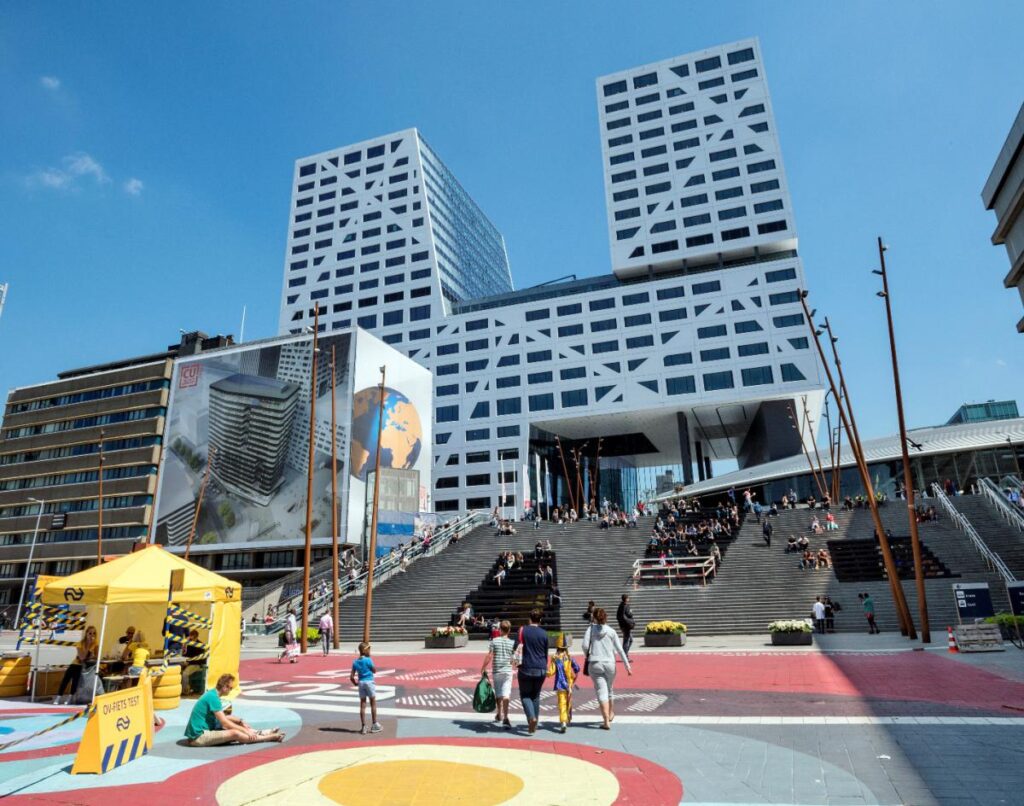
The aim of this project is to meet these district challenges and transform Kanaleneiland Zuid into a Near Zero Energy district that is livable, safe and socially inclusive, by integrating smart energy, lighting and mobility solutions, supported by meaningful information services thanks to the open ICT urban data platform. This calls for demonstrating extensive and innovative citizen engagement methods, resulting in citizens who understand, trust and use the integrated energy and mobility solutions offered in their homes and district.
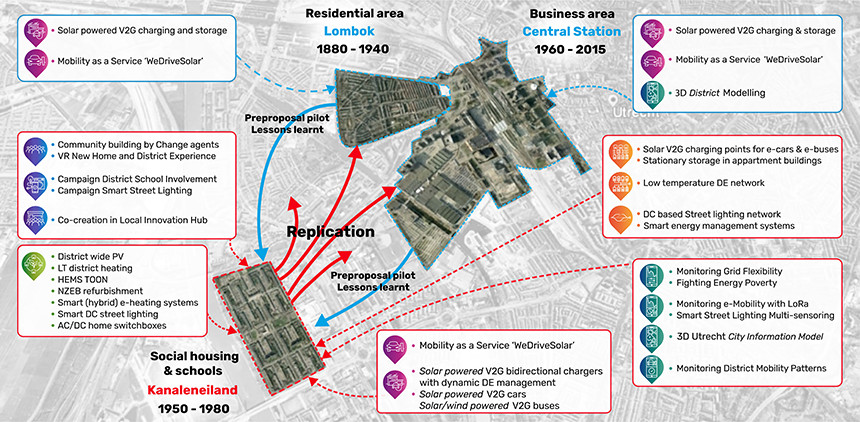
- Social housing corporation BOEX will invest heavily in deep retrofit of 12 apartment buildings during the IRIS project period, regenerating them from label E/F to A and transforming them into Near Zero Energy homes and contribute to a Near Zero Energy district.
- The buildings and three schools will all be covered with PV and will be provided by district wide power storage by means of bidirectional solar/wind powered V2G batteries from 14 shared WeDriveSolar V2G e-cars, 4 V2G e-vans and 10 V2G e-buses. In addition, stationary storage will be provided district-wide, including 2nd life batteries. The PV-systems, storage systems and electric vehicles will be interconnected by means of energy management and monitoring systems at building and district level, so that shortages and surpluses of energy are identified and may be exchanged, reducing the energy transition costs for all. Eight apartment buildings are now using gas for heating and hot water; hybrid electric heating will be demonstrated instead. The other four buildings are served by district heating; for this the focus will be at lower temperatures and integrating waste heat. DC distribution networks will enable solar power conversion without losses.
- Additional innovative methods will be demonstrated (service co-creation, change agents, campaigns) to motivate and train the tenants to energy saving behavior and to use the solar powered V2G e-car sharing system WeDriveSolar and e-buses instead of their own conventional cars.
Contact Information :
Mathijs Kok, Municipality of Utrecht,
matthijs.kok@utrecht.nl
